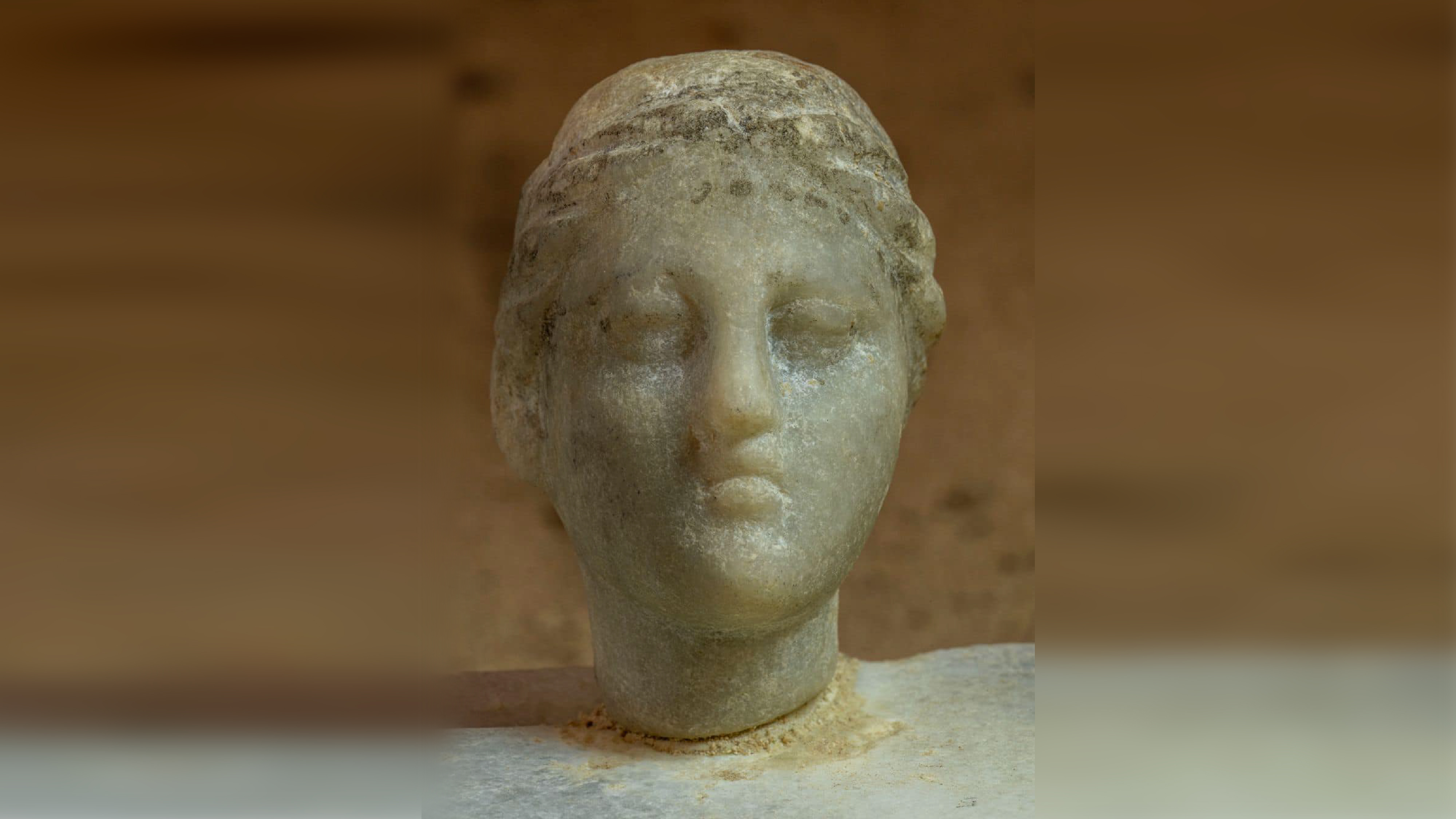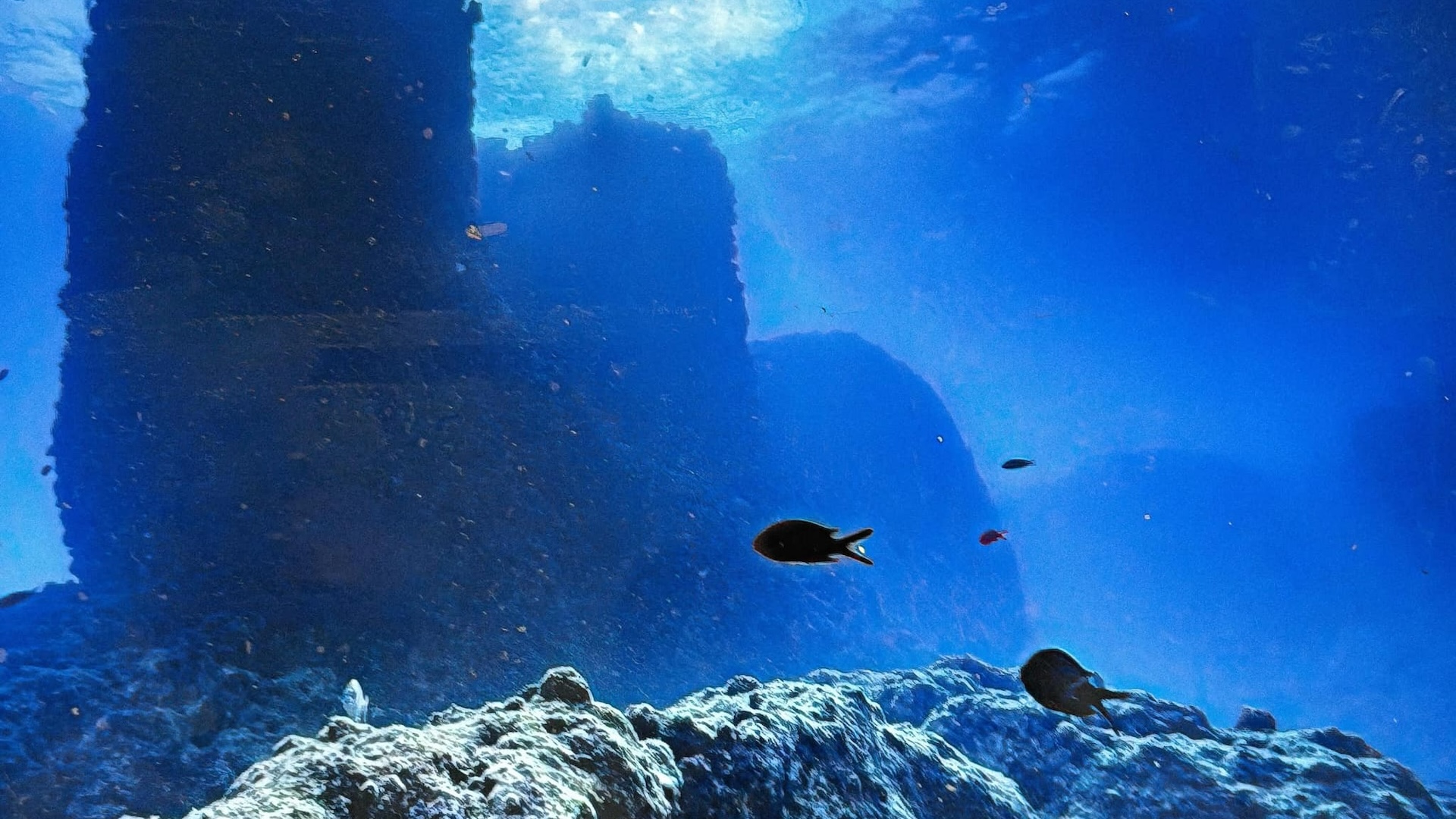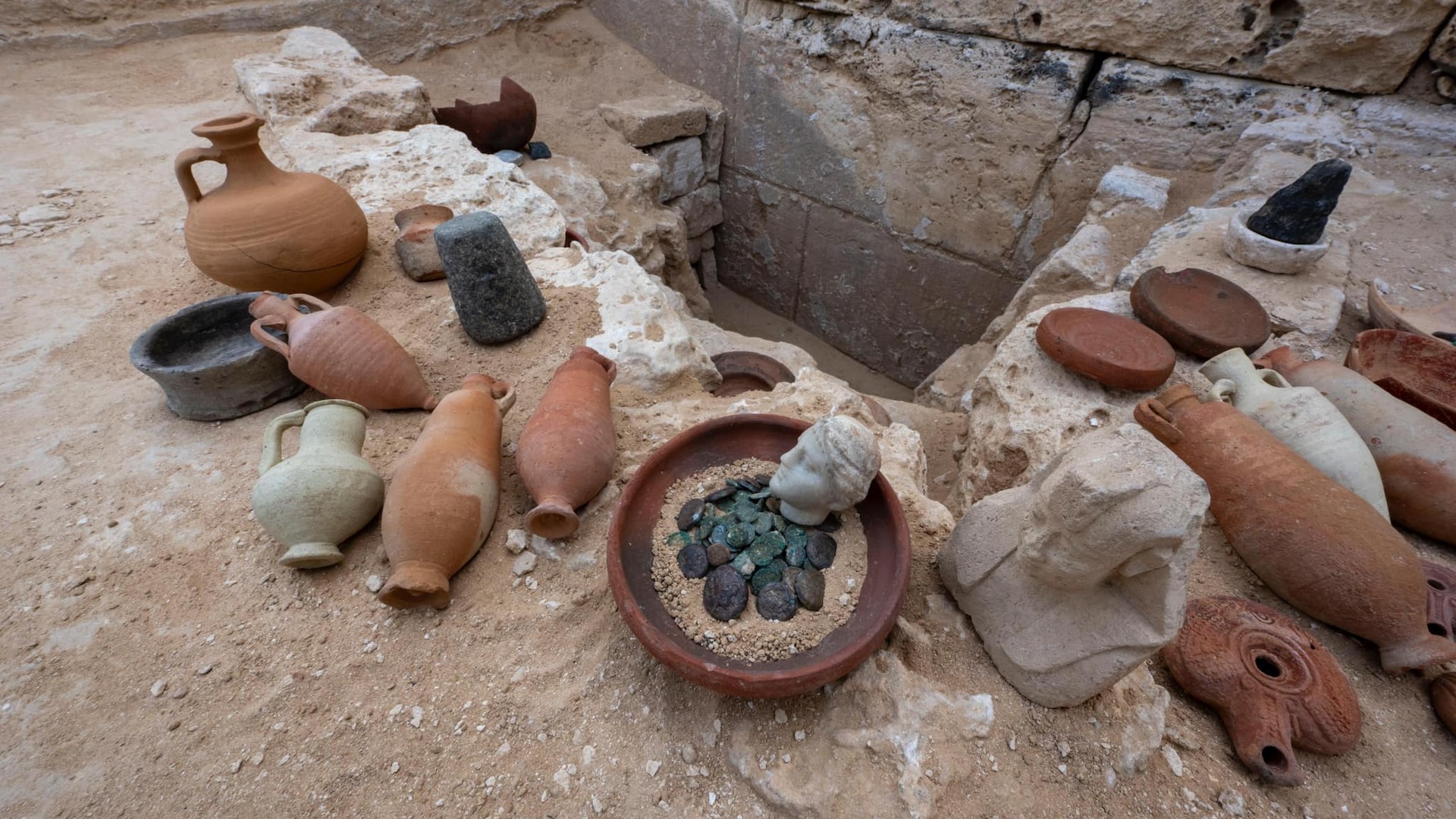
A small statue discovered under a temple wall at the site of an ancient Egyptian city may depict Cleopatra VII, the Egyptian queen who romanced Julius Caesar and Mark Antony, according to the archaeologist who is leading excavations at the site, known as Taposiris Magna. However, other archaeologists think the bust likely represents someone else.
The white, marble statue — which is small enough to fit in a person's hand — shows a female wearing a royal crown. Kathleen Martinez, an archaeologist who leads the Egyptian-Dominican team that is excavating the site, believes the statue depicts Cleopatra VII, according to a translated statement from the Egyptian Ministry of Tourism and Antiquities. Cleopatra VII (lived from 69 to 30 B.C.) was the last ruler of the Ptolemaic dynasty, which started when Ptolemy I Soter, one of Alexander the Great's generals, started ruling ancient Egypt in 305 B.C.
However, other archaeologists do not believe the bust depicts Cleopatra VII, the statement said, noting that the statue may represent a princess or another royal woman. Zahi Hawass, a former Egyptian minister of antiquities who was not involved in the finding but has excavated at the site in the past, said he thinks the bust dates to after Cleopatra's time.
"I looked at the bust carefully. It is not Cleopatra at all; it is Roman," Hawass told Live Science in an email. During the Ptolemaic dynasty, pharaohs were portrayed with Egyptian, not Roman, art styles. The Roman period in Egypt began in 30 B.C. after Cleopatra's death. Her tomb has never been found.
Taposiris Magna was a city founded around 280 B.C. near the Mediterranean Sea; it had a number of temples dedicated to Osiris and Isis, among other deities. A fragment of another bust depicting a king wearing the "Nemes" — a headdress that goes over the head and down to the shoulders — was found near the female bust at the temple in Taposiris Magna, the statement said. It's unclear which king this depicts, however.


Archaeologists also unearthed 337 coins, many of which depict Cleopatra VII, near the busts. In addition, they found a variety of other artifacts, such as oil lamps; a bronze ring dedicated to Hathor, a sky goddess associated with fertility and love; and an amulet engraved with the phrase "The justice of Ra has arisen." (Ra was the sun god.)
Related: What did Cleopatra, Egypt's last pharaoh, really look like?
All of the artifacts were found close together and were part of a "foundation deposit" at the temple, the statement said. Ancient Egyptians commonly buried a cache of items just before they began construction of an important structure; these object burials are now called foundation deposits.


In addition, the team found the remains of a different temple at Taposiris Magna that was in use between roughly the fourth and second centuries B.C., during Ptolemaic times. Near this temple, they unearthed a necropolis containing at least 20 tombs. They also explored underwater and found human remains, pottery and structures that have not been identified or dated.
Martinez and her team have been working at the site for more than a decade and have unearthed the remains of temples, tombs and a vast tunnel beneath a temple. Previously, she suggested that Taposiris Magna contains the tomb of Cleopatra VII, but this idea has little support among other archaeologists. Live Science contacted Martinez but did not hear back by publication time.







